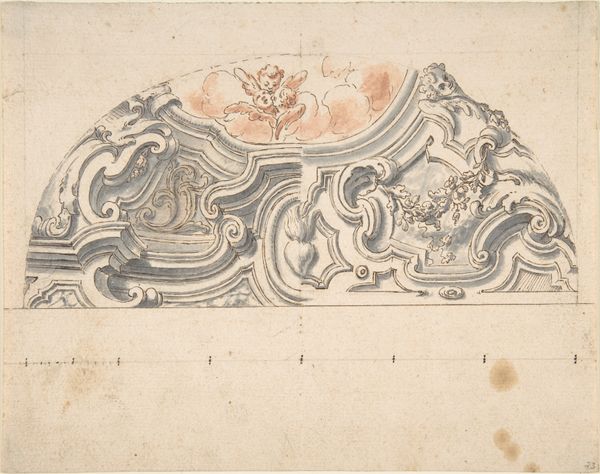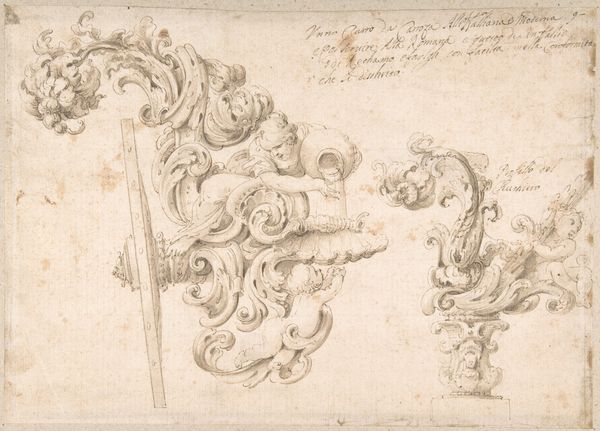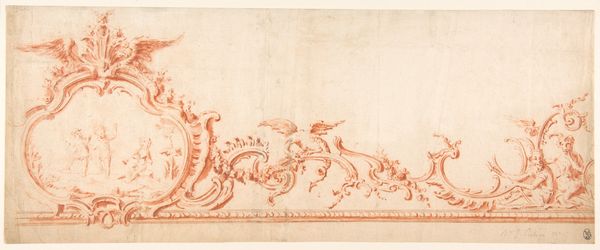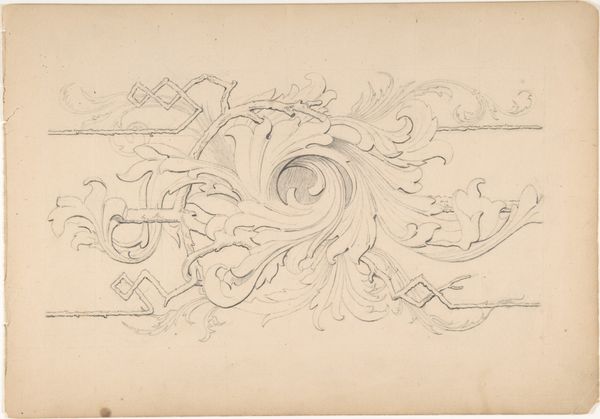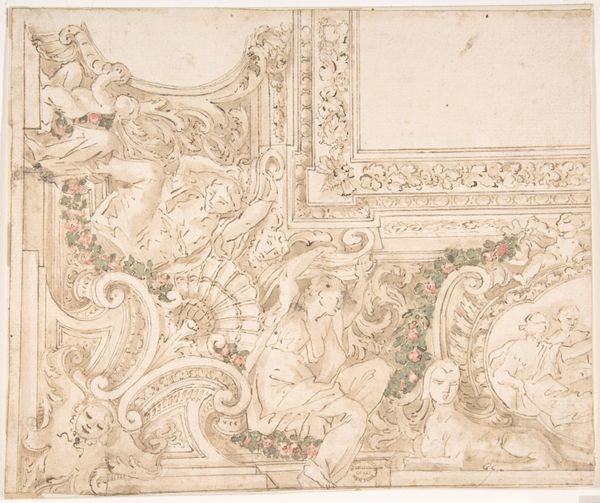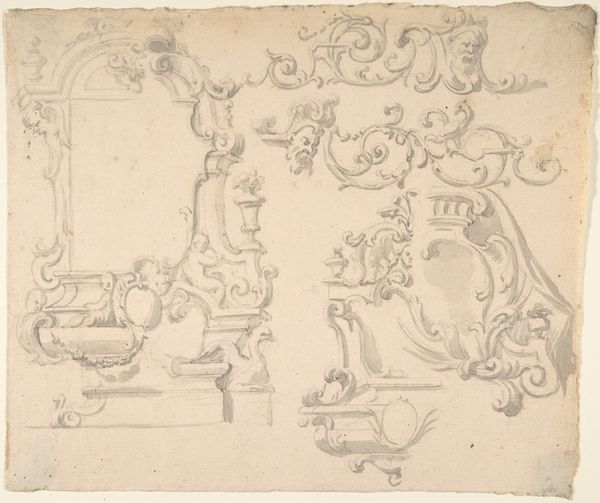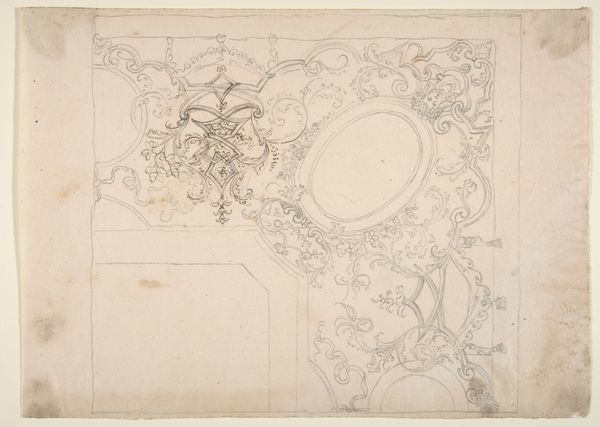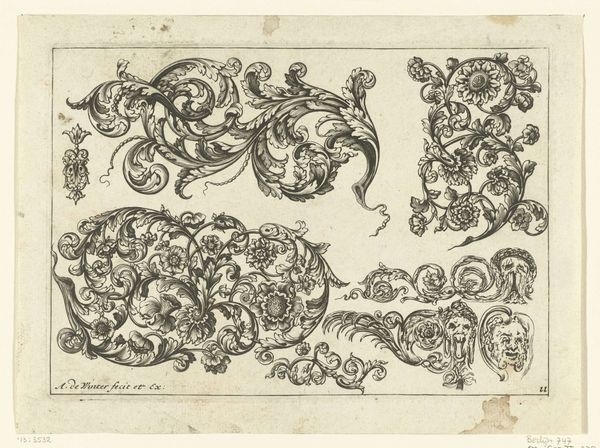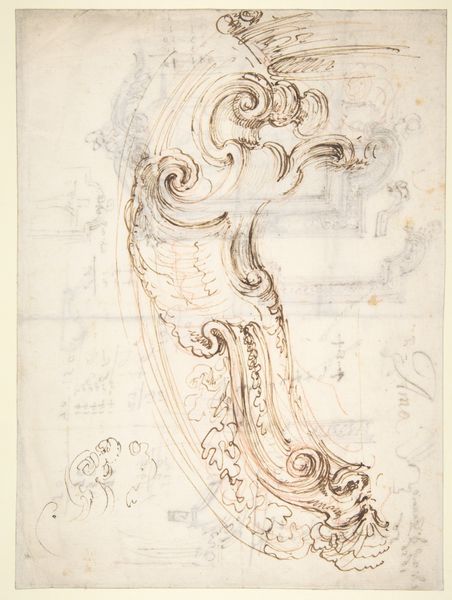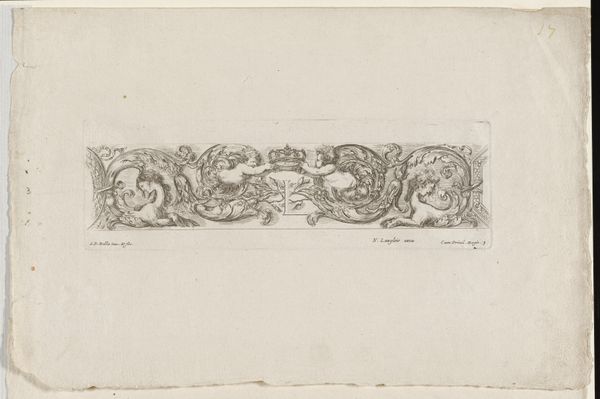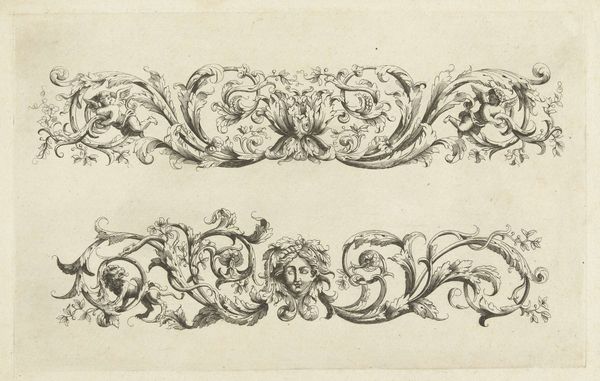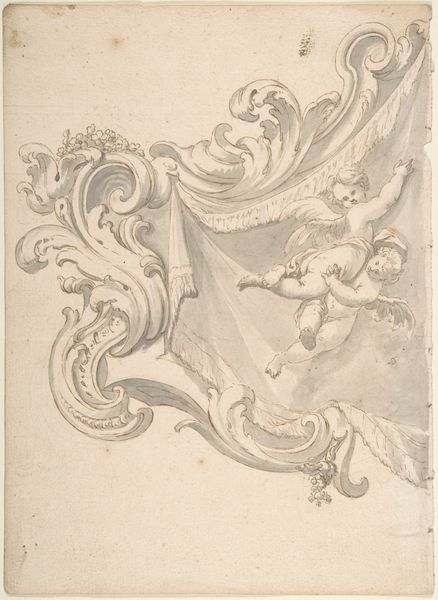
Part of a Circular Frieze with a Sphynx and a Putto with a Hybrid Creature 1500 - 1700
0:00
0:00
drawing, print, ink, pen
#
drawing
#
allegory
# print
#
figuration
#
11_renaissance
#
ink
#
pen
Dimensions: Overall: 3 7/8 x 6 1/4 in. (9.8 x 15.8 cm)
Copyright: Public Domain
Curator: Well, isn’t this little frieze fragment just darling? A bit rough, sure, but brimming with… possibility. Like a forgotten sketch pad dream, wouldn’t you agree? Editor: It's the material process for me. Look closely – it’s a drawing done with pen and brown ink on paper, sometime between 1500 and 1700. A preparatory drawing, maybe? Note the artist trying to envision ornamentation of architecture or furniture through allegorical means? Curator: Possibly! Though who the artist was remains a delightful mystery. Here at the Metropolitan Museum of Art, we've attributed it only as "Anonymous." I find it rather charming in its lack of... definitive authorship, allowing for a certain imaginative openness. The curves and flourishes remind me of Baroque pastries. Does that make sense? Editor: Makes sense if you’re considering the Baroque's own confectionary relationship to production and display. It’s undeniably ornate. See the circular composition populated with a sphynx, a putto astride some chimera. Ink on paper was relatively accessible; this level of decorative skill, though, would have certainly served some patron. Who paid for what, how much...those details interest me. Curator: Indeed, the echoes of patronage whisper from the paper. All those little cherubic figures floating among the swirling motifs—almost a dizzying dance! And then that curious sphinx, both regal and...lost? Editor: Sphinxes weren't exactly new by the Renaissance, but there’s a decided renewed interest in antiquity. See how it sits alongside Christian iconography. What materials would be best to represent it on a grand scale? Marble? Fresco? This work is just the beginning. It also looks like a mass produced drawing used in printmaking that democratized production beyond muralist production. Curator: Or...perhaps it’s the most complete expression it could ever hope to be, a perfect seed of an idea fully bloomed within its own inked boundaries. A whisper of grander designs that never needed to shout. And how liberating, really, that no single ego stakes its claim upon this fleeting beauty! Editor: Maybe. To me, its fragmented state shows the material processes and labor that goes into creating even the most beautiful art that obscures so much about its historical contexts, uses and values that change over time. Curator: I see what you mean—it’s not just the art that lives, but its history too. The conversations, the workshops... It adds another layer to the intrigue. Thank you for unveiling it! Editor: And thank you, it reminds me that behind production are dreams, intentions, values and beliefs.
Comments
No comments
Be the first to comment and join the conversation on the ultimate creative platform.
